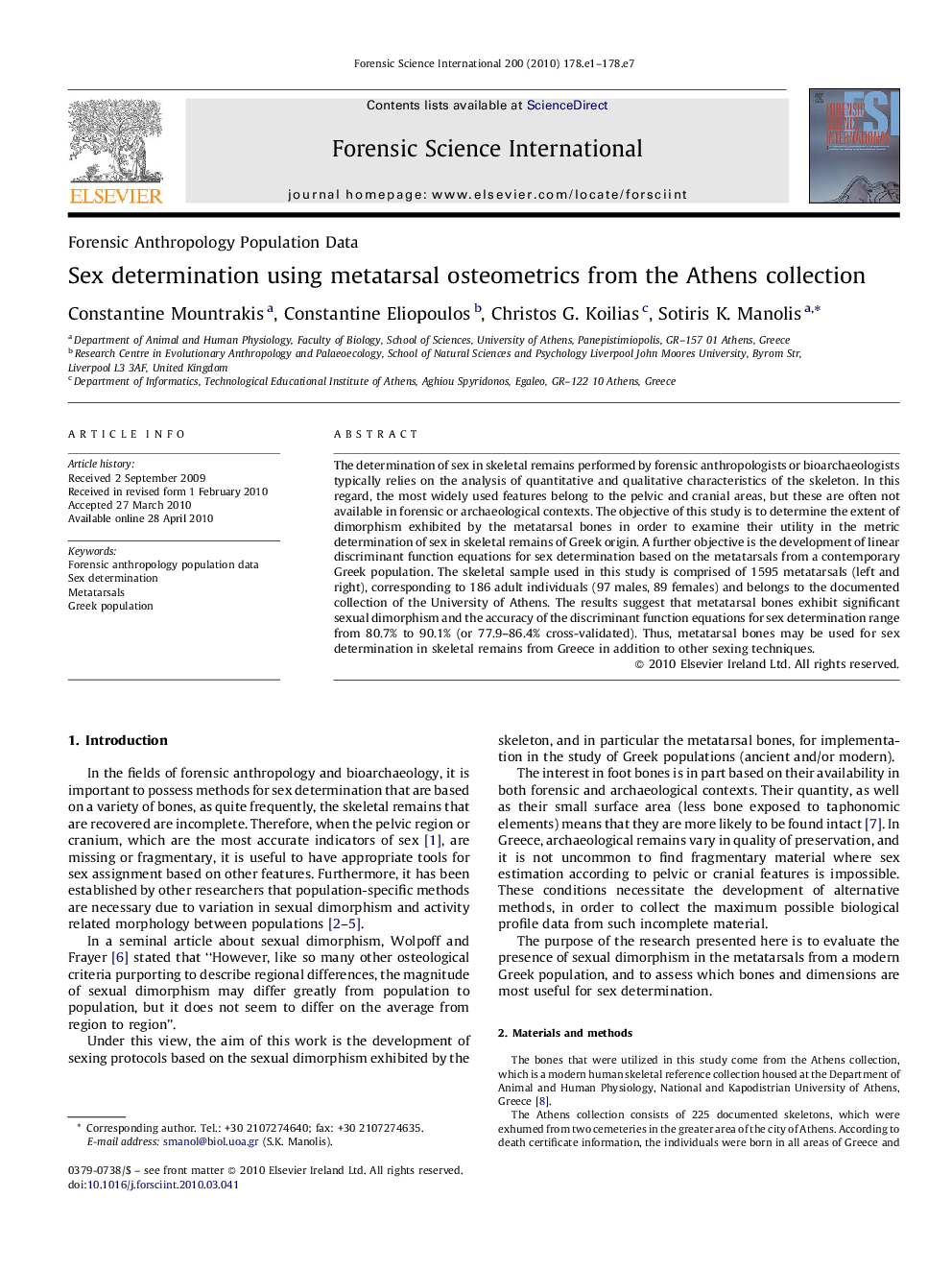| Article ID | Journal | Published Year | Pages | File Type |
|---|---|---|---|---|
| 97022 | Forensic Science International | 2010 | 7 Pages |
Abstract
The determination of sex in skeletal remains performed by forensic anthropologists or bioarchaeologists typically relies on the analysis of quantitative and qualitative characteristics of the skeleton. In this regard, the most widely used features belong to the pelvic and cranial areas, but these are often not available in forensic or archaeological contexts. The objective of this study is to determine the extent of dimorphism exhibited by the metatarsal bones in order to examine their utility in the metric determination of sex in skeletal remains of Greek origin. A further objective is the development of linear discriminant function equations for sex determination based on the metatarsals from a contemporary Greek population. The skeletal sample used in this study is comprised of 1595 metatarsals (left and right), corresponding to 186 adult individuals (97 males, 89 females) and belongs to the documented collection of the University of Athens. The results suggest that metatarsal bones exhibit significant sexual dimorphism and the accuracy of the discriminant function equations for sex determination range from 80.7% to 90.1% (or 77.9-86.4% cross-validated). Thus, metatarsal bones may be used for sex determination in skeletal remains from Greece in addition to other sexing techniques.
Related Topics
Physical Sciences and Engineering
Chemistry
Analytical Chemistry
Authors
Constantine Mountrakis, Constantine Eliopoulos, Christos G. Koilias, Sotiris K. Manolis,
